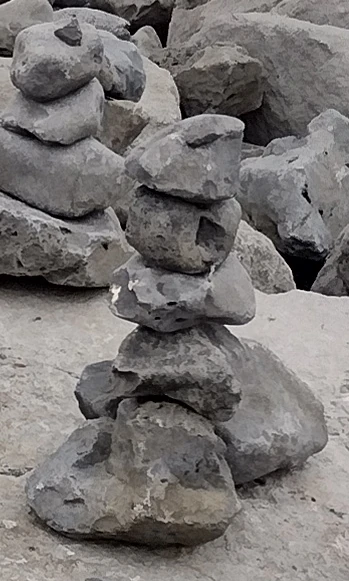Last Updated on June 15, 2025
Table of Contents



Hörgrs and Cairns
A hörgr (pronounced HOHR-gur) was an ancient Norse outdoor shrine or altar made of stone or wood. These sacred spaces served as sites for offering sacrifices, prayers, and rituals. Unlike temples, hörgrs were often simple structures, blending with the surrounding natural environment. They could range from a pile of stones to intricately crafted altars, depending on the resources available. The term hörgr appears in various forms in Old Norse literature, and related terms include horgr and hörg.
Hörgrs played an essential role in connecting people with the divine and the natural world. They were often located in forests, by rivers, or atop hills, where the presence of spirits and deities was believed to be strong. Offerings made at a these alters included food, drink, and sometimes animal sacrifices. The act of giving honored the gods and sought their blessings for harvests, protection, and prosperity.
The Poetic Edda mentions them, emphasizing their spiritual significance. In Völuspá (The Prophecy of the Seeress), the building of hörgrs symbolizes the establishment of sacred connections. This practice also ties to the Hávamál, which advises proper conduct and reverence during rituals. These texts highlight the importance of these sites in fostering relationships with deities and spirits. ![]()
Hörgrs were not limited to communal use. Families or individuals often maintained private shrines near their homes. These spaces allowed them to honor their ancestors, make personal offerings, and strengthen their spiritual ties. Their simplicity emphasized its sacred purpose over its physical design. It was the intent and devotion behind its use that held meaning.
Runes Associated with Hörgrs
The Elder Futhark runes Algiz (ᛉ) and Gebō (ᚷ) closely relate to hörgrs. Algiz, pronounced AHL-geez, represents protection and connection to higher powers. It signifies the sacred link between humanity and the divine, often sought during rituals. Gebō, pronounced GAY-boh, symbolizes reciprocity and the balance of giving and receiving. Offerings made at hörgrs reflected this mutual relationship between humans and gods, embodying Gebō’s essence. ![]()
Their Importance to Asatru
Hörgrs serve as focal points for spiritual practice among Asatruar. They provide spaces to honor gods, ancestors, and the natural world. Whether communal or private, these shrines create opportunities for reflection, gratitude, and connection. Through them, Asatruar uphold ancient traditions while fostering personal and communal bonds with the divine.


